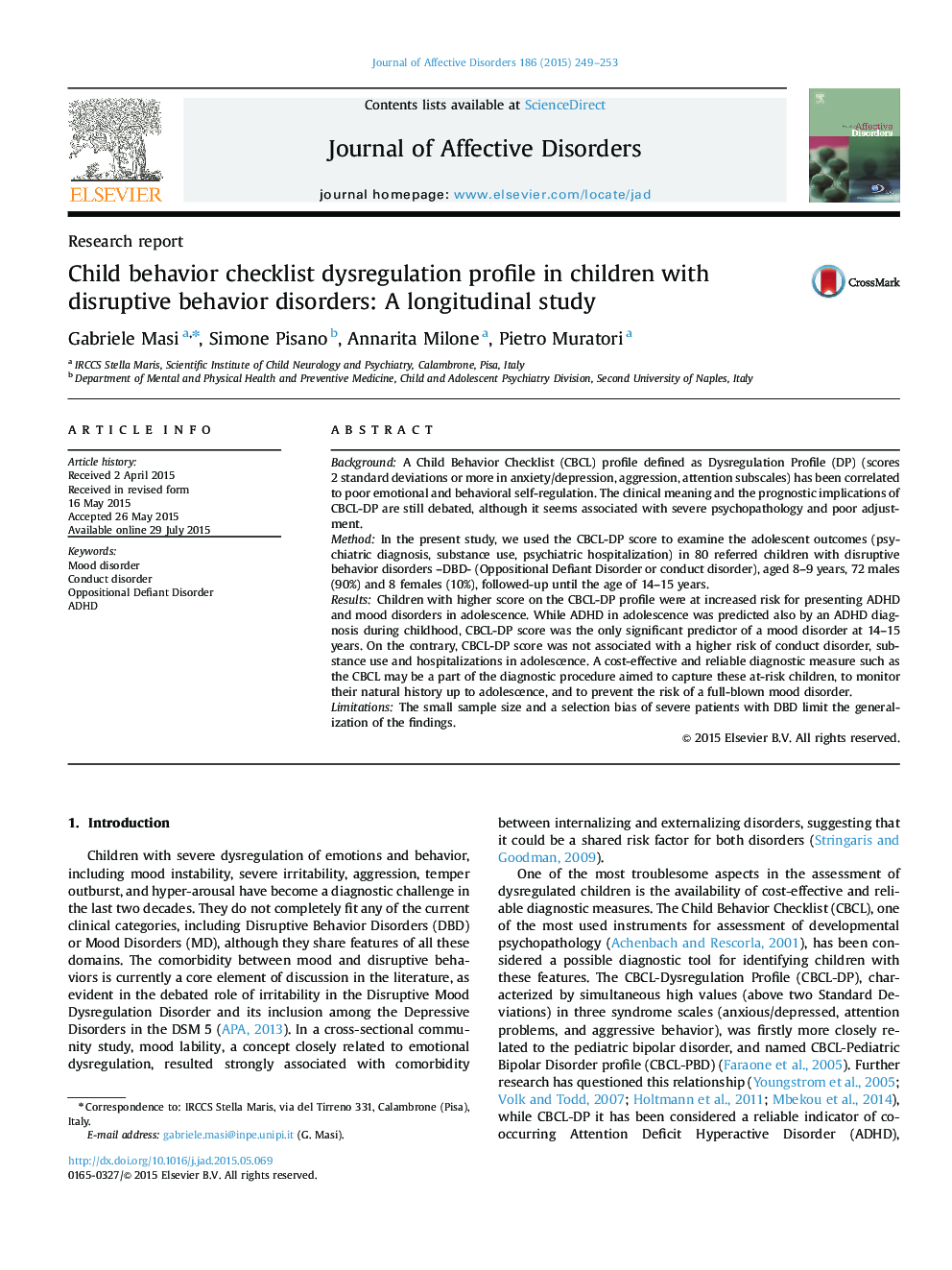| کد مقاله | کد نشریه | سال انتشار | مقاله انگلیسی | نسخه تمام متن |
|---|---|---|---|---|
| 6231188 | 1608139 | 2015 | 5 صفحه PDF | دانلود رایگان |
- Eighty children diagnosed as having an oppositional defiant disorder or a conduct disorder aged 8-9 years, 30% with Child Behavior Checklist-Dysregulation Profile (CBCL-DP), were followed up to the age of 14-15 years.
- A higher CBCL-DP score in children (8-9 years) with disruptive behavior disorder was associated to a higher risk to develop a mood disorder in adolescence (14-15 years).
- ADHD in adolescence (14-15 years) is independently predicted by having an higher score on CBCL-DP and ADHD in childhood (8-9 years).
- Patients with high CBCL-DP during childhood requie a more frequent and intense follow-up surveillance in order to timely detect a full-blown mood disorder.
BackgroundA Child Behavior Checklist (CBCL) profile defined as Dysregulation Profile (DP) (scores 2 standard deviations or more in anxiety/depression, aggression, attention subscales) has been correlated to poor emotional and behavioral self-regulation. The clinical meaning and the prognostic implications of CBCL-DP are still debated, although it seems associated with severe psychopathology and poor adjustment.MethodIn the present study, we used the CBCL-DP score to examine the adolescent outcomes (psychiatric diagnosis, substance use, psychiatric hospitalization) in 80 referred children with disruptive behavior disorders -DBD- (Oppositional Defiant Disorder or conduct disorder), aged 8-9 years, 72 males (90%) and 8 females (10%), followed-up until the age of 14-15 years.ResultsChildren with higher score on the CBCL-DP profile were at increased risk for presenting ADHD and mood disorders in adolescence. While ADHD in adolescence was predicted also by an ADHD diagnosis during childhood, CBCL-DP score was the only significant predictor of a mood disorder at 14-15 years. On the contrary, CBCL-DP score was not associated with a higher risk of conduct disorder, substance use and hospitalizations in adolescence. A cost-effective and reliable diagnostic measure such as the CBCL may be a part of the diagnostic procedure aimed to capture these at-risk children, to monitor their natural history up to adolescence, and to prevent the risk of a full-blown mood disorder.LimitationsThe small sample size and a selection bias of severe patients with DBD limit the generalization of the findings.
Journal: Journal of Affective Disorders - Volume 186, 1 November 2015, Pages 249-253
